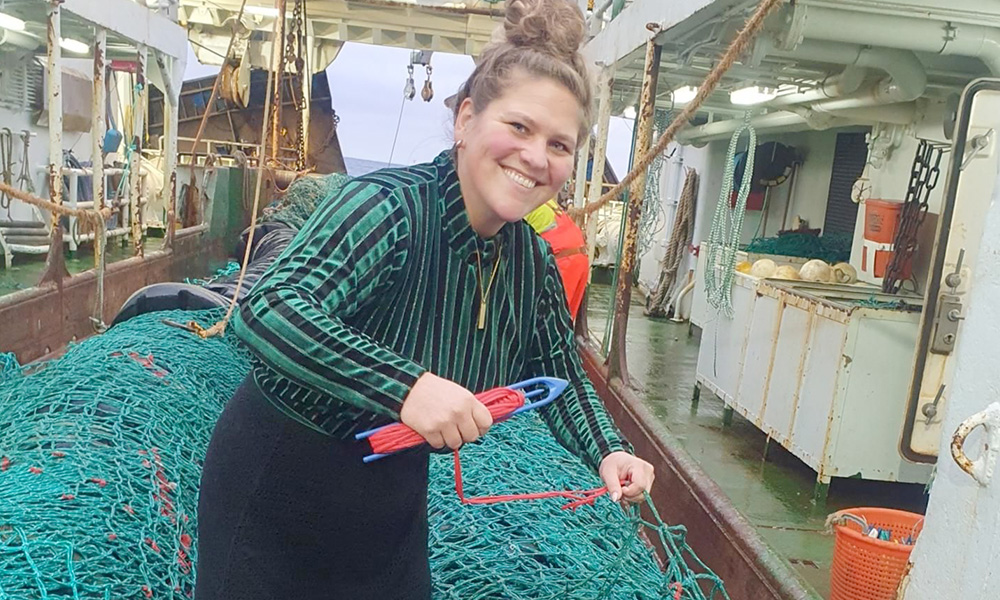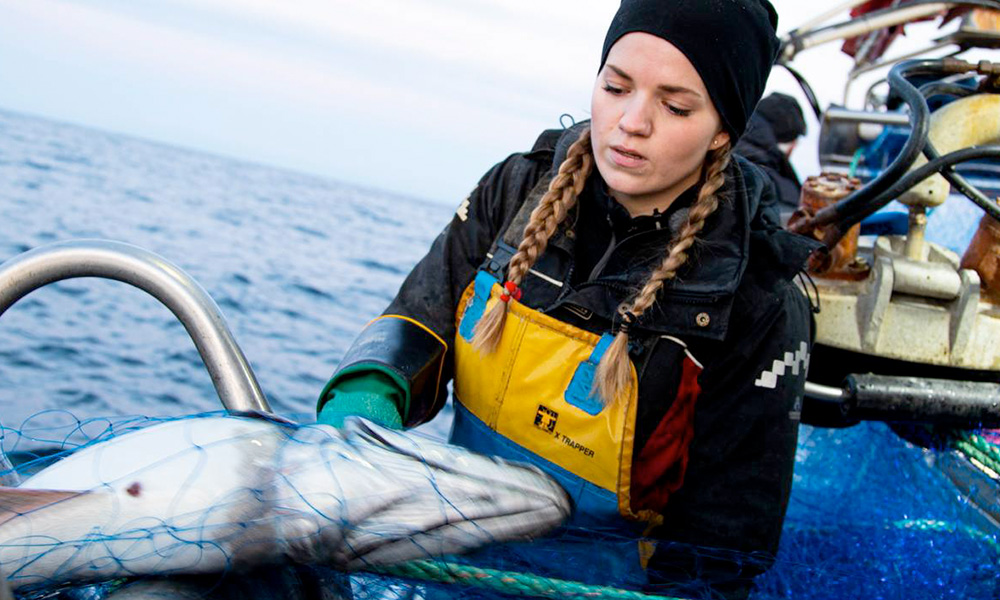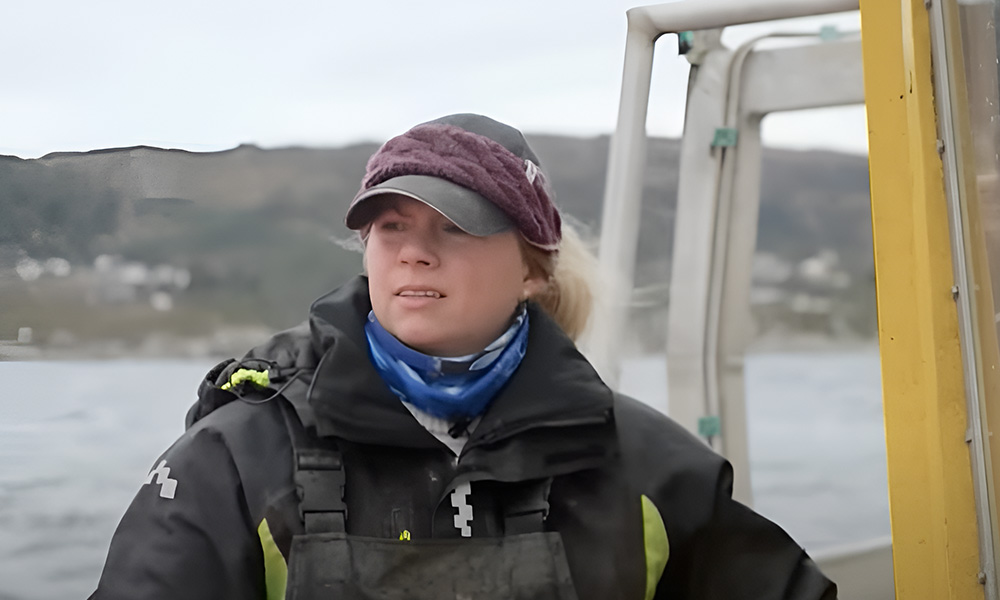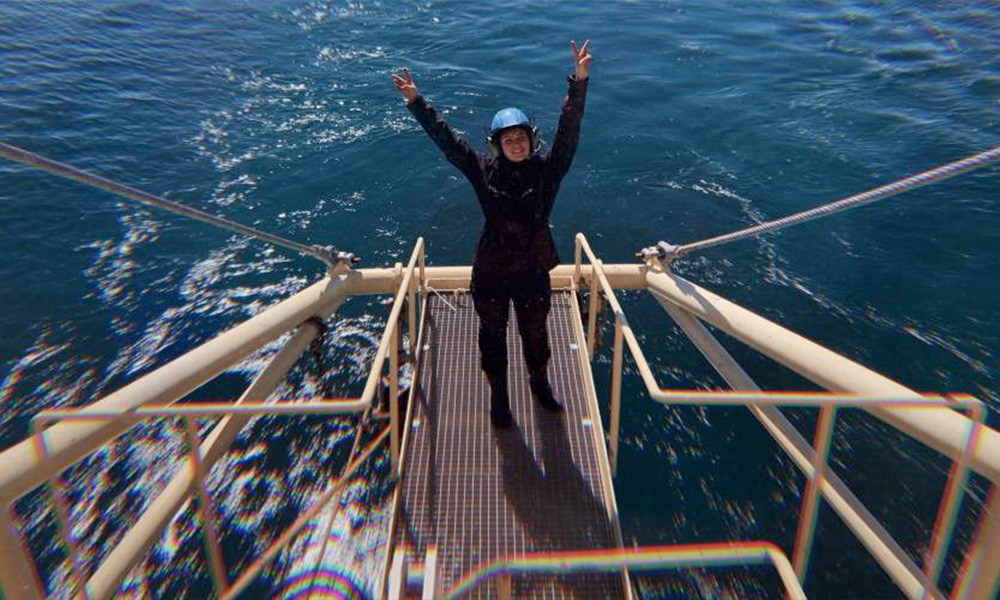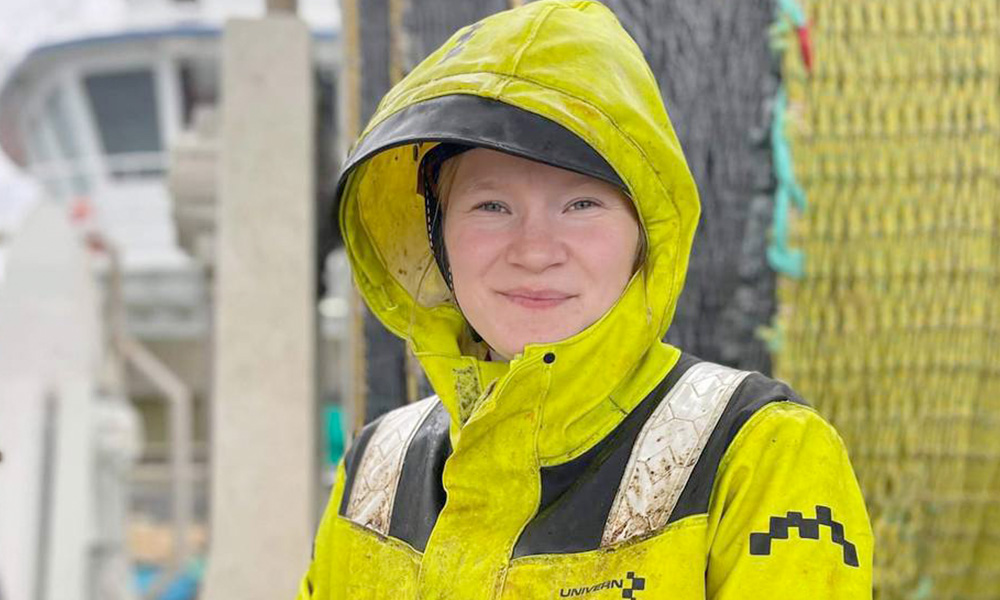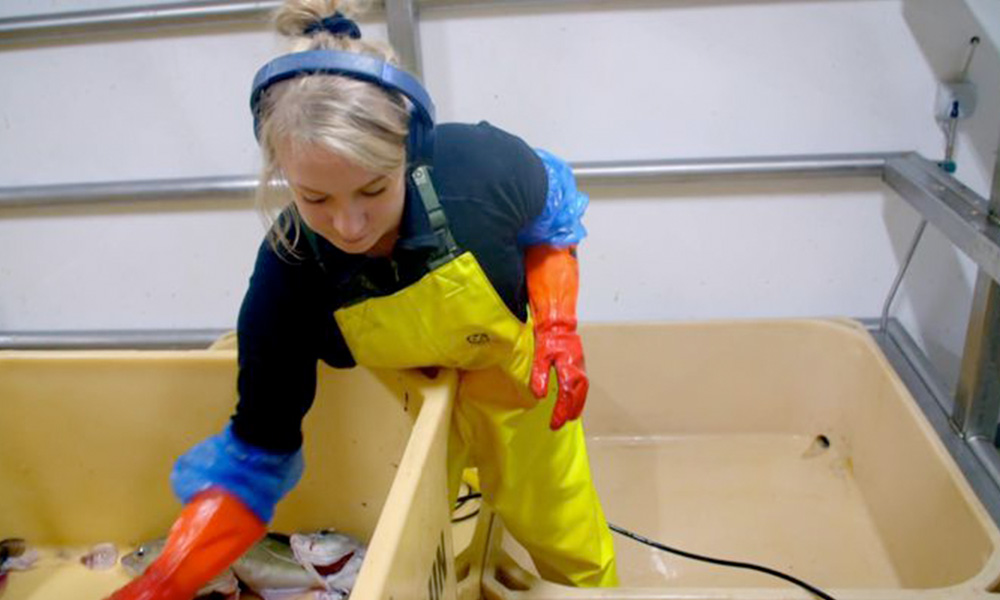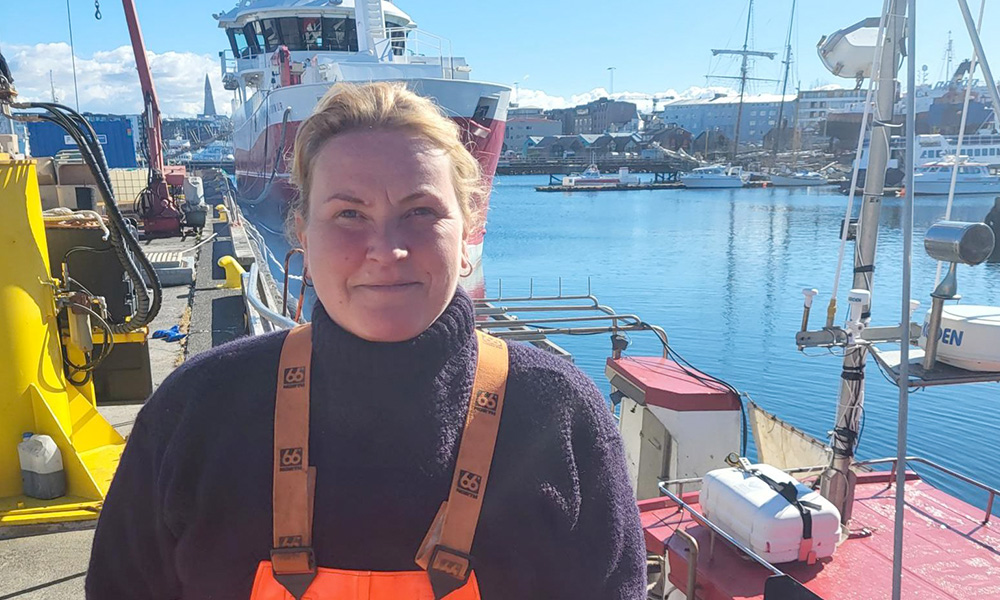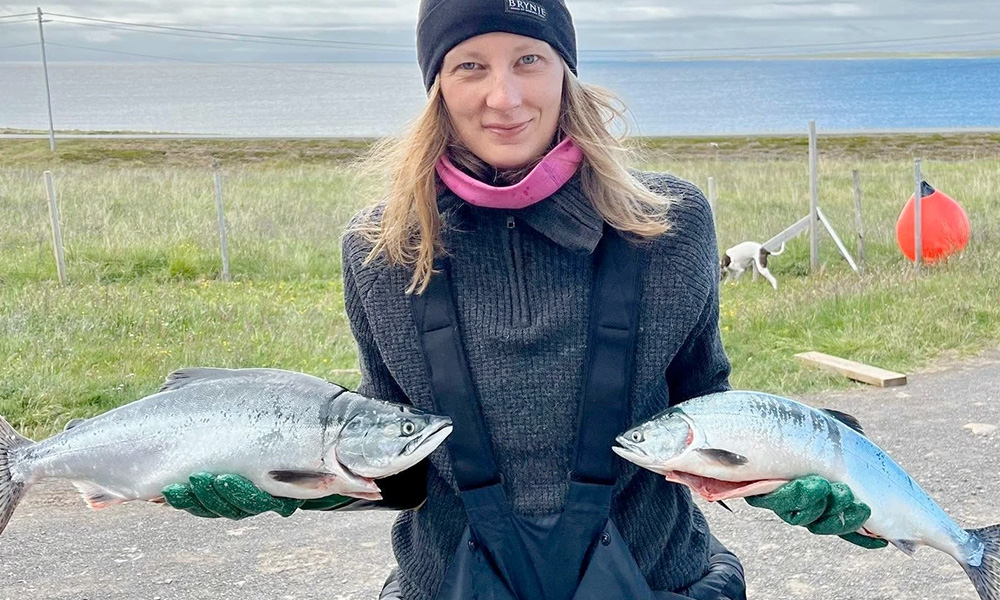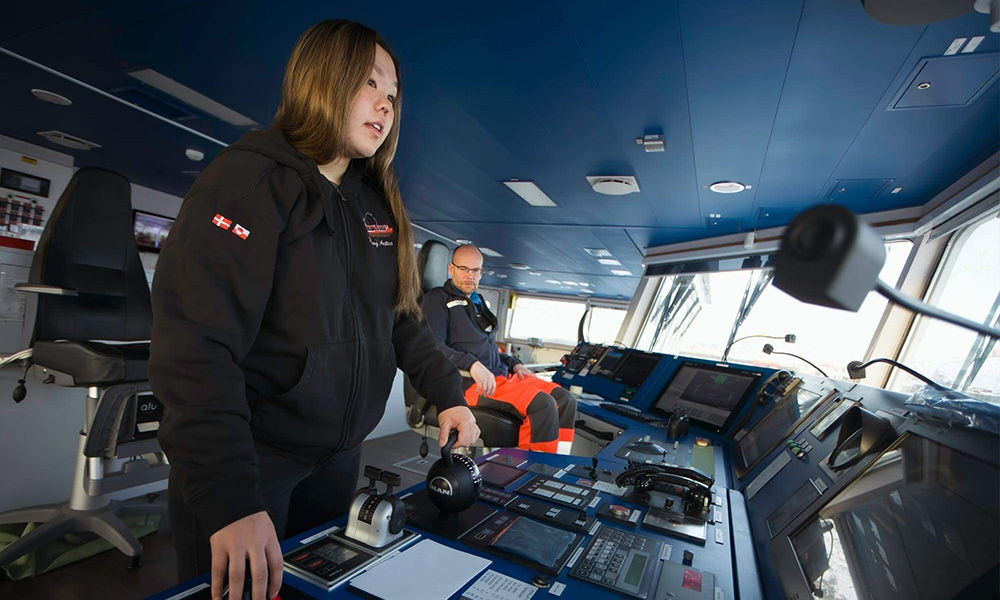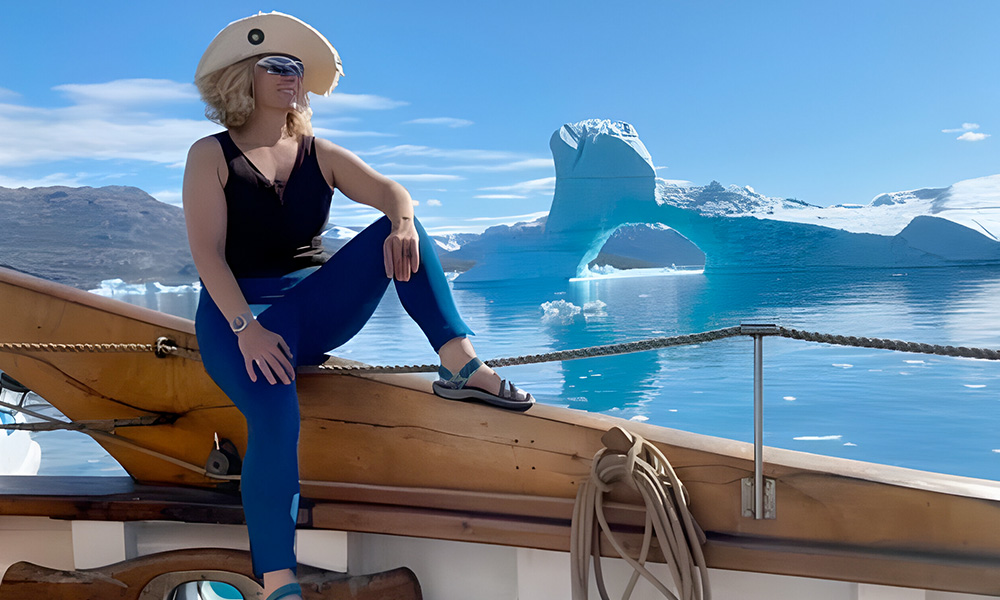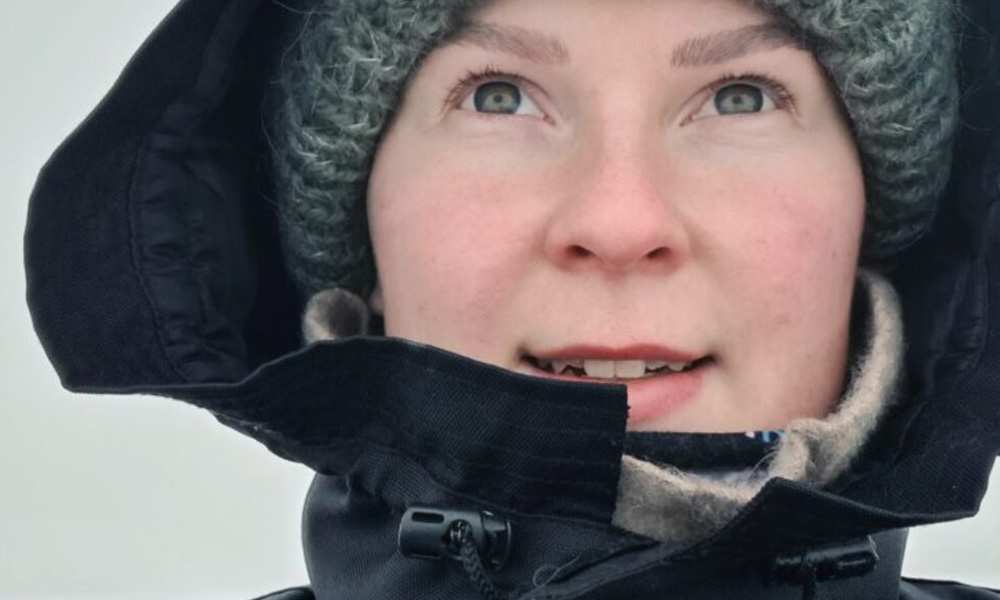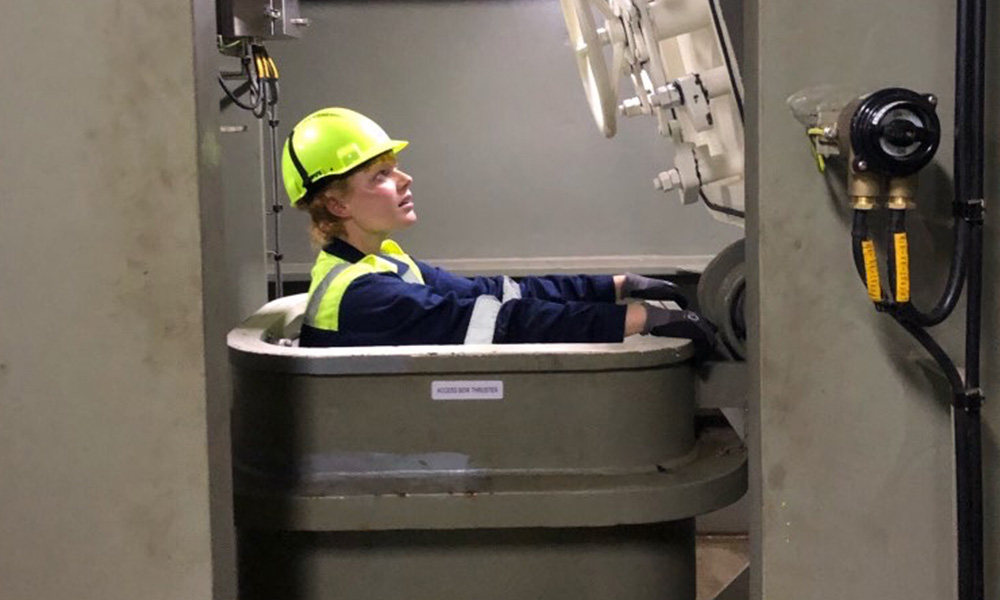Photos: iStock and Umagebank Sweden, Aline Lessner
Captains and fishers – finding gendered fish-legs
It is important to document and understand women's contributions to fisheries as professional fishers and political actors to challenge assumptions that fishing can only be done by men, while also highlighting the interacting cultural and structural barriers that can limit women's participation (Gerrard & Kleiber, 2019). Siri Gerrard has done research on female fishers in Norway for decades and in one of her most recent articles she and her co-author Kleiber conclude that the number of registered fishing boats has decreased as an effect of regulation (Gerrard and Kleiber, 2019). Thus, the number of women and men registered as fishers has declined since 1990 by 59% (ibid).
In Norway, women’s contribution to fishing households focused on their role as part of the “ground crew”, engaging in many of the land-based fishing tasks (Balsvik 2001; Gerrard 1983). They were not registered as fishers, but their labour was integral to pre-harvest and postharvest tasks such as baiting long-lines, cleaning boats, washing clothes, gutting fish and sometimes the administrative work related to the crew and the boat (Gerrard ,1983; Gerrard, 2011;Munk-Madsen, 2000; Jentoft, 1989; Thiessen et al., 1992; Pettersen, 1994).
While women’s labour has been critical to the longevity of the fisheries industry, they have not been seen as fishers, either by men or by women themselves. Women‘s crucial historical role in the fisheries in Norway came to be termed “the hidden fishery” and “ground crew” to highlight the important work performed by women onshore for the fisheries. Women supported men‘s activities as fishers through unpaid work in the home, producing food and clothes and caring for children and animals in the traditional household of a fisherman farmer. Although it was recognised that life as a fisherman was nearly impossible without a woman at home, women’s work and efforts were not considered in the formal fishery accounts. One consequence of women’s informal role in the fishing industry was a loss of welfare rights (Kilden, 2023). There are also similar accounts from Iceland (Karlsdóttir, 2005, Willson 2016).
Women’s fisheries labour has also often been paid less or not paid at all. Indeed, women’s fisheries tasks have been considered a natural part of their duties in fishing households. They fit in with their roles as daughters, sisters, wives, partners and friends in fishing communities (Bratrein, 1976; Elstad, 2004; Flakstad, 1984; Gerrard, 1995; Pettersen, 2018; Grønbech 2008). However, women have also worked at sea, both as crew and as owners of their own boats.
Nofima was commissioned by the Norwegian Ministry of Trade, Industry and Fisheries to study women in Norwegian fisheries, their formal and real equality status and to develop potential measures to increase the proportion of women in the sector (Henriksen and Nyrud, 2021). The aim was to draw up a strategy for better gender equality in fisheries. In its efforts to collect statistical data shedding light on equality, it found that despite double the number of women studying relevant disciplines at secondary and vocational level (Vg2 fish and harvesting/fiske og fangst) from 2012-2021, the proportion of women is still low (11.3%). That is reflected in the proportion of vocationally trained interns (5.3%) and women who have got recruitment quotas in the period 2010-2020 (1.6%). The proportion of female full-time and part-time fishers has constantly been low (2.5-4%). While the average age of female fishers is lower than for males, women registered as fishers are generally older (Henriksen and Nyrud, 2021, p.1). Women are generally older than men when they start their career as a fisher and remain for a shorter time in the industry. In Finnmark and Rogaland (counties in Norway), female fishers are higher in number. There is a low proportion of women among boat owners. In the open fisheries it is on average 4.3% and in the closed fisheries allocation system, the proportion of female owners is at a stable low or absent (0-2.5%).
The most recent state of affairs in terms of ownership of vessels is shown in the table below (source: Fiskeridirektoratet, 2023). We have not been able to retrieve statistical data for Nordic countries other than Norway on gender distribution of vessel ownership. However, we have data on ownership of vessels in Denmark by age (see figure 33).
Vessel size | Total number of vessels | Vessels owned by women (>50%) | Vessels owned by men (>50%) | No single ownership above 50% |
|---|---|---|---|---|
Under 11 meter | 4,409 | 189 | 3,999 | 221 |
11-14.99 meter | 676 | 4 | 598 | 74 |
15-20.99 meter | 101 | 84 | 17 | |
21-27.99 meter | 99 | 62 | 37 | |
28 meter and over | 286 | 8 | 108 | 170 |
Total | 5,571 | 201 | 4,851 | 519 |
Table 4. Ownership breakdown of the Norwegian fishing fleet as at the end of 2022. Source: Norwegian Fishery directorate
In Finland, women’s involvement in fisheries is portrayed as important, albeit both “visible” and “invisible”, as labour efforts often remain without remuneration and achievements are overlooked by authorities and academic research (Salmi and Sonck-Rautio, 2018).
Figure 24. Fishers in Norway by gender, 1994-2019.
Source: Fiskermanntalet
Source: Fiskermanntalet
When the number of fishers in Norway broken down by gender is examined from 1983, and especially from 1994 to 2019, it can be observed that the number of male fishers has decreased by over 42%, while the number of female fishers has decreased by 25%.
Figure 25. Fishers in Iceland by gender, 1991-2021.
Source: Iceland statistics labour market survey 2021
Source: Iceland statistics labour market survey 2021
While the number of female fishers was at the same level (n=400) in 1991 and 2021, the number of female fishers peaked at 900 in 1999. The number of male fishers fell by 36% between 1991 and 2021.
Figure 26. Fishers, secondary occupation in Greenland by gender, 2008-2020.
Source: Greenland statistics
Source: Greenland statistics
The number of female fishers as a secondary occupation in Greenland has fallen by 38% since 2008, while that of male fishers has fallen by roughly 23%. The opposite trend goes for fishers with fishing as their main occupation, with an increase in the number of both female and male fishers (31 more women and 97 more men) compared to 2008.
Figure 27. Fishers as main occupation, Greenland, by gender, 2008-2020.
In the Faroe Islands, the number of male fishers has decreased by roughly 5% since 1985, while over 52% less women are active as fishers since 1985. The graph below shows development of the number of fishers in the Faroe Islands since 1994 (Faroe Islands statistics, 2023).
Figure 28. Number of fishers by gender in the Faroe Islands, 1994-2021.
Source: Faroe Islands statistics
Source: Faroe Islands statistics
In Sweden, fishers have increased in number since 2014; the number of female fishers has roughly doubled and seven females were registered fishers in 2020 (SCB, Sweden Statistics, 2022).
Figure 29. Fishers in Sweden by gender, 2014-2020.
Source: SCB, 2022
Source: SCB, 2022
In Finland, the number of fishers of both sexes has decreased slightly. Finland has considerable inland and lake fisheries, so the statistics encompass both inland and coastal fisheries.
Figure 30. Inland and coastal fishers by gender in Finland, 2010-2020.
Source: Finland statistics
Source: Finland statistics
Young people in the fishing industry
Fisheries are an important economic source in many Nordic coastal communities, especially in remote areas. One of the biggest identified threats and weaknesses in the Nordic fisheries sector is the lack of women in the industry, as well the declining numbers of young people entering the fisheries field.
Taking the situation in Denmark as an example, the two graphs demonstrate the ageing of the fishing sector. The first graph shows the decreasing number of people employed in fishing in Denmark, and the change in age representation – the largest age group of Danish fishermen is now 55 years and older. Participation of women in fishing remains very low.
The second graph demonstrates the average age of Danish vessel owners. Unfortunately, this statistic is not available by gender. The average age of vessel owners is increasing over time. The report Nordic coastal fisheries and communities (Viðarsson et al., 2018) identified barriers to the coastal fishing industry in the Nordic countries. The findings of recent studies in Iceland paint a similar picture (Lebedef & Chambers, 2023). In all the Nordic countries, one of the sector’s main weakness is the low rate of young people entering the field. The reasons are similar; unattractiveness of small villages, low wages and, for small-scale fisheries, the high initial investment and the reorganisation of harbour areas previously dedicated to small-scale fishing. The increasing popularity of Nordic fishing villages as summer and tourist destinations has led to proportionally high second-home ownership. In some cases – Denmark in particular – this ghost-town effect has significantly weakened the infrastructure for the permanent population and consequently the local fishing industry (Ouanian, 2016).
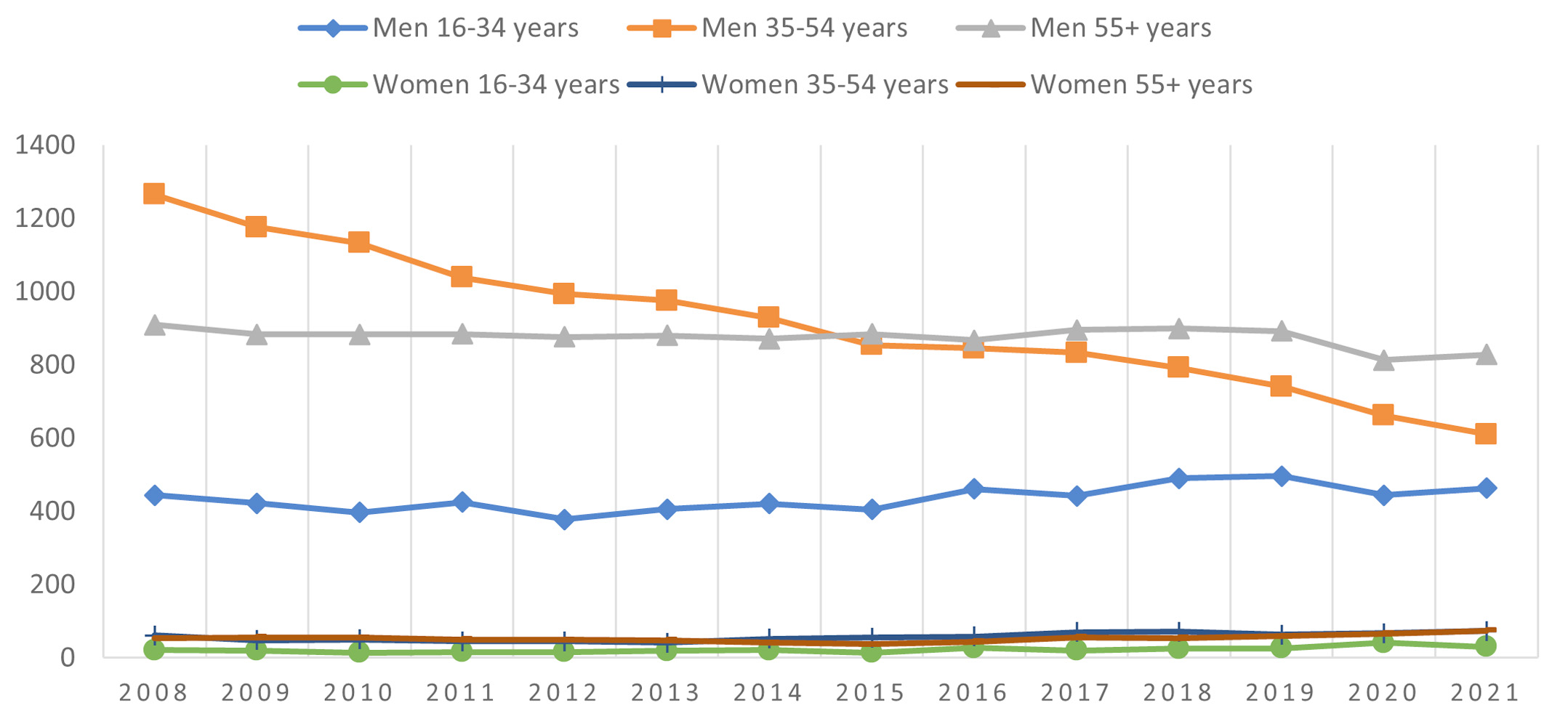
Figure 31. Employees in fishing by age in Denmark, 2008-2023.
Source: Statistikbanken (statbank.dk)
Source: Statistikbanken (statbank.dk)
Figure 32. Average age of Danish vessel owners, 2009-2018.
Source: Age statistics (fiskeristyrelsen.dk)
Source: Age statistics (fiskeristyrelsen.dk)
Iceland and Norway show the same trend, as does Greenland even if the average age is lower than in the rest of the Nordic countries.
Figure 33. Average age of professional fishers, Greenland, 1993-2022.
Source: Greenland Statistics, 2023
Source: Greenland Statistics, 2023
Lebedeff (2021) observed that there was and is a common perception of fishers as strong, brave and hard-working in the Westfjords of Iceland, but newer ideas about fishers are less favourable, contributing to decreased attractiveness of jobs at sea, with implications for young people’s choices (Lebedeff & Chambers, 2023). The new ideas are associated with fishers not being smart enough for school and thus un-educated and even working as modern-day slaves on larger trawlers. The more favourable association with the job is that good pay makes it an honourable line of work that allows young men to provide for their families (Lebedeff 2021, p.30).
Female licence holders at sea tend to obtain their licence later in life, thus making their working life at sea shorter than that of men (Henriksen & Nyrud, 2021). That provides food for thought both within the education system and in industry. There are some indications – from the media primarily – that young women feel drawn to the sea as a field of work, which contradicts that trend. Maybe change is afoot.
